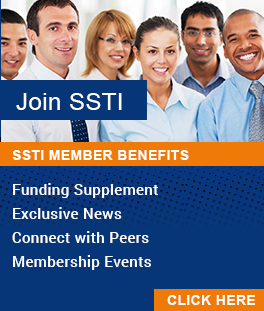workforce
Census Bureau’s Narrative Profiles offer a snapshot of your region’s demographic and workforce data
The U.S. Census Bureau’s Narrative Profiles is an online resource that presents American Community Survey (ACS) 5-year estimates as easily digestible analytic reports.
Tennessee Governor requests nearly $100M for energy innovation in proposed spending plan
On Feb. 10, Tennessee Gov. Bill Lee presented his 2025 State of the State address along with his FY 2025-2026 budget proposal and legislative agenda.
Recent Research: The paradox of progress: How narrowing pay gaps might perpetuate gender inequality
A recent working paper from the Federal Reserve Bank of Boston, Self-reinforcing Glass Ceilings by Carlos F. Avenancio-León, Alessio Piccolo, and Leslie Sheng Shen delves into the complexities of the gender pay gap, even after it has narrowed. The authors challenge the conventional understanding that a shrinking gender pay gap automatically leads to greater gender equality.
Bachelor’s degrees are no longer required for many jobs
Bachelor’s degrees are no longer required for many jobs
2023 was a watershed moment in the history of the bachelor’s degree. Against a backdrop of a historically tight labor market, persistent talent shortages, and rising skepticism of the value of higher education, numerous state governments and major corporations dropped college degree requirements for many of their jobs.
Good Jobs Challenge $25M funding opportunity released
The U.S. Department of Commerce has announced a new $25 million Good Jobs Challenge Notice of Funding Opportunity for investment in high-quality, locally led workforce training programs that lead to good jobs.
US competitiveness sabers drawn for budget battle, election, future
Significant differences between the House and Senate versions of the FY 25 budget numbers for science and the quadrennial election cycle might explain the increased language one hears concerning national security, competitiveness and global economic conditions. Data presented in a July issue brief by the National Science Board (NSB), however, should help raise the issue to encourage honest discussion about how the federal government will take on the challenges to U.S. leadership in innovation. Additionally, a new paper from the Aspen Strategy Group et al.
National Semiconductor Technology Center Consortium seeks proposals to address workforce challenges in the semiconductor industry
Natcast, the nonprofit entity that operates the National Semiconductor Technology Center (NSTC) Consortium, recently launched the NSTC Workforce Partner Alliance (WFPA) program. The program seeks to address workforce challenges in the U.S. semiconductor industry by supporting projects that close skills and labor market gaps for researchers, engineers, and technicians in semiconductor design, manufacturing, and production.
Nearly 1 in 5 US workers are over 65 as retirements are delayed
The workforce is growing older, and that’s very likely a good thing for U.S. productivity. Various statistics reveal the active workforce over 65 is more likely to have higher education levels than historically, working at a 0.75 full-time equivalent rate on average, and is working for lower wages on average than younger workers.
Artificial intelligence and the US labor market
Artificial intelligence (AI) is already well integrated into the American workforce; in 2022, 19% of American workers were in jobs identified as most exposed to AI, compared to 23% in the least exposed jobs, according to a study by Pew Research. Jobs identified as most exposed are those in which the most critical responsibilities can either be replaced or assisted by AI.
Maryland’s first State of the Economy report finds almost a decade of stalled economic and population growth
Last week (Jan. 3), Maryland’s state comptroller released the state’s first State of the Economy report.

